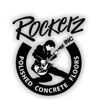
With Americans, on average, spending more than 90% of their time indoors, cultivating a healthy indoor environment can begin with sound daylighting strategies. The effective use of daylight in today’s buildings not only plays a significant role in achieving energy efficiency, but also successfully nurtures the occupants within. Each day, new research, case studies, design guides, and design standards magnify the importance of daylight as a source of interior lighting that drives human health, productivity, and happiness.
As living beings, we feel the benefits of being exposed to daylight, and when we don’t have it, we crave daylight and views. As designers, we have always known that effectively integrating daylight and views into buildings make them better, more energy efficient and better environments for the occupants within. The problem, in years past, was providing the concrete evidence that access to daylight and views provided direct financial benefit to corporations and building owners. As a result, the benefits of daylight on occupant wellbeing, satisfaction, and productivity were largely anecdotal.
Today, we are at an exciting and pivotal point in time relative to how we understand, justify, and place a value upon providing daylight and views in the building design process. Today’s revelation in the justification for providing and codifying the need for daylight and views is following the same process that was used to justify and mandate the use of natural air requirements in modern building ventilation design strategies and code requirements that are ubiquitous in the HVAC community today. For centuries, anecdotal information allowed architects to justify the desire for providing natural, outdoor ventilation to indoor spaces. Architects long understood that poor indoor air quality (IAQ) results in “sick” buildings, and is acknowledged in hindering occupant comfort, productivity, health, and discourages tenants from renewing their leases.
Today, we would never think of depriving building occupants from ventilation systems that provide a certain percentage of fresh, outside air. In the realm of HVAC systems design, there are legal ramifications for buildings that have unhealthy indoor environment. Anecdotal support for using fresh, outside air in building ventilation transitioned to concrete, well-documented facts when physicians, engineers, and architects pooled their knowledge and applied evidence-based design to the area of building ventilation research and application. Evidence-based design research studies clearly proved that the use of minimum fresh air ventilation requirements made the building occupants happier, and healthier. Since 1973, the American Society of Heating, Refrigerating and Air-Conditioning Engineers (ASHRAE) Standards 62.1 and 62.2 for Ventilation and Indoor Air Quality are the recognized standards for ventilation system design and acceptable IAQ in modern, conditioned buildings.
Since the pivotal discovery of the intrinsically photosensitive retinal ganglion cells (iPRGC), and research that documents the iPRGC’s role in the human circadian cycle and health, the road was paved that has allowed physicians, researchers, scientists, engineers and designers to work together to develop and apply evidence-based design with the artful and beneficial application of daylight and views to modern buildings. Today, the ever-growing body of research and design case studies continue to evolve the justification of daylight and views for the psychological, and physiological benefit of building occupants.
As such, evidence-based design has been used to support the development of new rigorous building and space assessment and rating metrics relative to daylight sufficiency, such as the spatial Daylight Autonomy (sDA) and Annual Sunlight Exposure (ASE) metrics developed by the Illuminating Engineering Society (IES), and human circadian stimulation, using melanopic illumination criteria which are a different point of reference than the age-old photopic illuminance criteria used for traditional lighting design, to modern building design guidelines and standards such as the U.S. Green Building Council’s (USGBC) LEED Rating Tools and the International WELL Building Institute’s (IWBI) WELL Building Standard (WELL).
Research and evidence-based design activities show, beyond a shadow of a doubt, that providing building occupants with the artful application of daylight and views results in improved health and happiness. Quality exposure to daylight (as a source of interior illumination) and views results in improved occupant mood, decreased stress, lower rates of depression, increased alertness/wakefulness, and improved health. The end result is that psychological and physiological health go hand in hand, and access to daylight and views are key elements of a building’s design that improve the indoor environmental quality of a building for human wellness.
Today, evidence-based design has given way to a new building-related design, justification, and investment in wellness in real estate. The goal of wellness real estate is to make the occupants’ wellness the basis for the conception, design, and development of new buildings and communities. The wellness real estate market has become a multi-billion-dollar industry.
Daylight and Productivity
When employees are fulfilled in their workplace environment, they are more engaged, produce higher quality individual work, and are much happier in general, which creates a more enjoyable work space.
A research poll of 1,614 North American employees found that over a third of employees feel that they don’t get enough natural light in their workspace. About 47% of employees admit they feel tired or very tired from the absence of natural light or a window at their office, and 43% report feeling gloomy because of the lack of light. Additionally, “The Future Workplace Employee Experience Study found 78% of employees say access to natural light and views improves their wellbeing and 70% report improved work performance.”
Daylight and Wellness
Natural light is truly the best medicine for the office
A recent study by Dr. Alan Hedge, a workplace design expert and professor in the Department of Design and Environmental Analysis at Cornell University, found that workers in daylight office environments reported a 51% drop in the incidence of eyestrain, a 63% drop in the incidence of headaches and a 56% reduction in drowsiness. Hedge concluded that “As companies increasingly look to empower their employees to work better and be healthier, it is clear that placing them in office spaces with optimal natural light should be one of their first considerations.”
Workers with more light exposure in the office had longer sleep duration, better sleep quality, more physical activity and better quality of life compared to office workers with less light exposure in the workplace, reports a study from Northwestern Medicine and the University of Illinois at Urbana-Champaign.
Neall Digert, Ph.D., MIES, Vice President of Solatube International, Inc., has over thirty years of consulting and education experience working in the energy/lighting/daylighting design and research fields, specializing in the design and application of advanced lighting and daylighting systems for commercial building applications. He possesses a unique technical background in optical daylighting systems, architectural daylighting solutions, and advanced energy and lighting strategies. As Solatube’s Vice President, Dr. Digert draws upon his expertise in the design and consulting arenas to build public awareness of new optical daylighting technologies, guide future product developments and refinements, develop new global sales and marketing strategies, and pioneer new design and application tools and protocols to support the successful integration of optical daylighting products into today’s commercial, educational, and industrial buildings. Dr. Digert’s technical background encompasses illumination engineering, building energy engineering, and the psychology of perception relative to luminous environments. Dr. Digert holds a Bachelor of Science degree in architectural engineering, a Master of Science degree in building energy/civil engineering, and a Doctorate in building energy/civil engineering, all earned at the University of Colorado.





























